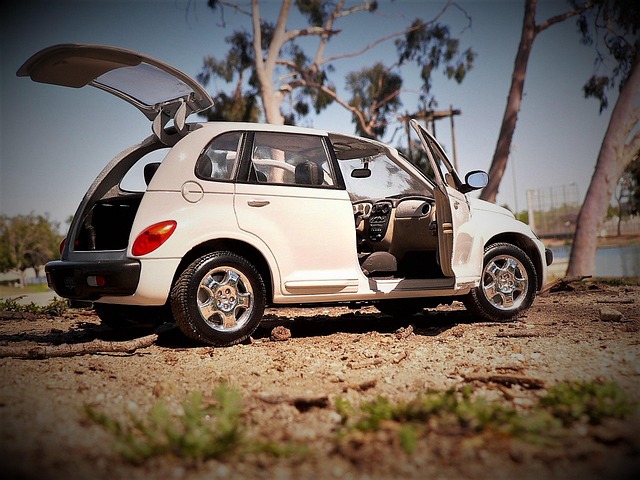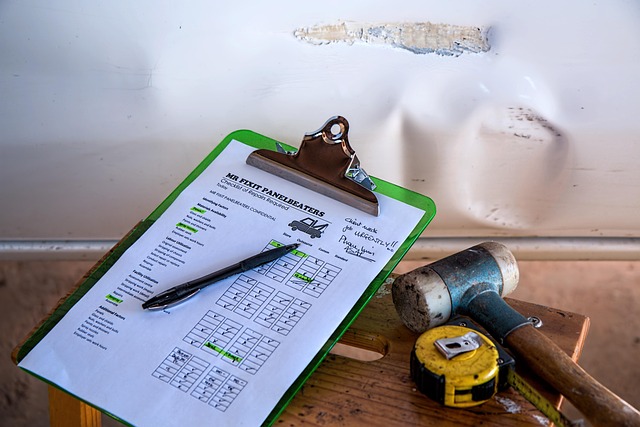Tesla Factory Paint Codes: Unlocking Calibration Secrets for Quality Control
Tesla factory paint codes are unique identifiers that specify color formulations, application techni…….
In the rapidly evolving world of automotive manufacturing, attention to detail is paramount, especially when it comes to aesthetics. Tesla, the pioneering electric vehicle (EV) company, has consistently pushed boundaries, not just in technology but also in design and color innovation. At the heart of this lies the intricate topic of Tesla factory paint codes—a system that dictates the vibrant palette adorning their vehicles. This article aims to take you on a comprehensive journey through the world of Tesla’s paint codes, exploring their significance, global impact, technological advancements, and the challenges they present. By delving into these aspects, we will uncover the intricate details that contribute to Tesla’s distinctive and ever-evolving color landscape.
Definition: Tesla factory paint codes are a standardized system used by Tesla Motors to identify and specify the colors offered for their vehicles at the factory level. These codes serve as a critical component of the manufacturing process, ensuring consistent and accurate color reproduction across every vehicle produced.
Components: The code typically consists of several parts:
Color Name/ID: This is the most recognizable part, often a catchy name or a unique identifier for each shade. For instance, “Phantom Grey” or “Red Multicoat.”
Paint Code: A series of letters and numbers that provide detailed information about the paint composition, including pigment, base, and clearcoat specifications. For example, “P158C” might indicate a specific type of metallic paint with a unique formula.
Application Year: Some codes include a year indicator, allowing for tracking of color availability over time. This is especially useful for collectors and enthusiasts who seek historical accuracy.
Historical Context: Tesla’s paint code system has evolved alongside the company’s rapid growth and technological advancements. From their early days focusing on sleek metallics to introducing unique matte finishes and vibrant custom colors, each new addition reflects Tesla’s desire to offer its customers a personalized and distinctive driving experience.
Tesla’s factory paint codes have left an indelible mark on the global automotive industry, inspiring both competitors and consumers alike. The company’s commitment to offering an extensive palette of colors has set a new standard in EV customization. Here’s how it plays out on a worldwide scale:
Regional Preferences: Different regions exhibit varying preferences when it comes to vehicle color. For instance, North America leans towards bold, vibrant hues, while European markets often favor more subtle, classic colors. Tesla’s paint codes cater to these preferences, with regional variations in their offerings.
Global Color Trends: Tesla has been at the forefront of introducing unique and on-trend colors. From the iconic ‘Space White’ to the mysterious ‘Midnight Grey,’ these colors have become desired options for EV buyers worldwide. The company’s ability to forecast global trends and translate them into paint code offerings is a testament to its market understanding.
International Adoption: Many automotive manufacturers, both traditional and electric, have adopted similar systems, ensuring a more consistent customer experience across borders. This has led to a global standardization of color identification, making it easier for car enthusiasts to find and discuss specific shades.
The economic implications of Tesla’s paint codes are far-reaching, impacting both the company’s bottom line and the broader automotive market:
Market Segmentation: Different paint colors can appeal to distinct customer segments. Tesla’s strategy of offering a wide range of options allows them to cater to diverse tastes, potentially increasing market share and profitability.
Investment Opportunities: The allure of exclusive paint codes and limited-edition colors drives up demand, creating opportunities for premium pricing and special editions. This tactic not only enhances brand value but also generates additional revenue streams.
Supply Chain Impact: Sourcing and producing specialized paints require significant investment in research and development. Tesla’s commitment to color innovation influences the entire supply chain, from pigment manufacturers to paint applicators.
Tesla has consistently pushed technological boundaries, and its paint codes are no exception. The company’s R&D efforts have led to several notable advancements:
Metallic and Pearl Finishes: Tesla was among the first to offer a wide array of metallic and pearl paints, adding depth and luster to their vehicles. These finishes are achieved through sophisticated mixing and application techniques, resulting in striking visual effects.
Matte Revolution: The introduction of matte paint finishes was a game-changer, offering a low-maintenance alternative to traditional glossy paints. Tesla’s implementation of this technology has inspired other manufacturers to explore similar options.
Custom Color Options: Tesla’s online configurator allows customers to choose from an extensive palette or even design their own color. This level of personalization requires advanced digital tools and precise manufacturing processes, ensuring the desired outcome at the assembly line.
The automotive industry is subject to various regulations, and Tesla’s paint codes are not immune to these constraints. Here’s how policy and regulation play a role:
Environmental Standards: Many countries have strict regulations regarding the environmental impact of vehicle finishes, including paint. Tesla must ensure that its paints meet or exceed these standards, which often involve low volatile organic compound (VOC) emissions and sustainable production methods.
Safety and Quality Control: Paint codes are subject to rigorous testing to ensure durability and safety. Tesla adheres to industry standards for paint quality, ensuring a consistent level of protection and aesthetics across all its vehicles.
International Compliance: As a global manufacturer, Tesla must navigate a web of international regulations. This includes adhering to local color naming conventions, environmental standards, and safety protocols, making the paint code system a dynamic and adaptable process.
Despite its many achievements, Tesla’s paint code system is not without challenges and criticisms:
Cost and Availability: Specialized paints can be more expensive to produce and source, potentially increasing vehicle costs. This may limit availability for certain colors, especially in regions with lower demand.
Consistency Across Models: Ensuring consistent color reproduction across different Tesla models and production runs is a complex task. Minor variations in paint formulations can lead to subtle differences in appearance, which might be noticeable to discerning customers.
Customer Expectations: Tesla’s customers have high expectations regarding color accuracy and durability. Meeting these expectations requires continuous improvement in manufacturing processes and material science.
Solutions and Strategies: To address these challenges, Tesla could consider:
Implementing advanced quality control measures during production to ensure consistent paint performance.
Developing cost-effective alternatives for high-demand colors while maintaining quality.
Enhancing communication with customers regarding color availability and potential variations.
Tesla’s limited-edition ‘Shadow’ model, released in 2020, featured a unique matte black paint finish with subtle purple undertones. This color became an instant hit among enthusiasts, selling out within weeks of its launch. The success of this edition demonstrated Tesla’s ability to create desirable and exclusive paint options, fostering a sense of community and ownership among customers.
A customer named John decided to personalize his Tesla Model S using the company’s online configurator. He chose a custom color, ‘Ocean Blue,’ with a unique twist—a metallic pearl finish. The result was a stunning vehicle that turned heads wherever it went. This case highlights the power of customization and Tesla’s ability to deliver on creative customer requests.
The future of Tesla factory paint codes looks bright, with several emerging trends and growth areas:
Sustainable Color Solutions: With growing environmental concerns, Tesla will likely explore more eco-friendly color options, focusing on water-based paints and sustainable pigments. This not only reduces the carbon footprint but also aligns with consumer preferences for greener products.
Advanced Material Science: Innovations in material science will enable new possibilities, such as self-cleaning paints, improved scratch resistance, and enhanced UV protection. These advancements will contribute to longer-lasting finishes and reduced maintenance requirements.
Digital Customization: The online configurator will continue to evolve, offering even more customization options, including virtual color swatches and augmented reality (AR) tools to visualize choices in real-world scenarios.
Global Expansion of Exclusive Colors: Tesla’s success in certain markets may lead to the global rollout of exclusive colors, creating a sense of exclusivity and desirability for collectors and enthusiasts worldwide.
Tesla factory paint codes represent more than just a color palette; they are a testament to innovation, customization, and automotive art. From their inception, these codes have evolved to meet the demands of an ever-changing market, reflecting Tesla’s commitment to pushing boundaries. As the company continues its global expansion, its paint code system will undoubtedly play a pivotal role in shaping the future of vehicle aesthetics, offering customers unparalleled choices and experiences.
Q: How does Tesla ensure color consistency across different production runs?
A: Tesla employs sophisticated quality control measures, including advanced sensors and testing protocols, to monitor paint application during production. This ensures consistent color accuracy and finish across all vehicles.
Q: Can I customize the color of my Tesla through the online configurator?
A: Absolutely! Tesla’s online configurator allows for extensive customization, including choosing from a vast palette or designing your own unique color.
Q: Are there any environmental concerns related to Tesla’s paint codes?
A: Yes, Tesla is conscious of environmental impact. They strive to meet or exceed regulations regarding VOC emissions and sustainable production practices, ensuring their paints are as eco-friendly as possible.
Q: How often does Tesla introduce new paint colors?
A: The frequency varies, but Tesla typically introduces new colors with every model year or significant update, ensuring fresh options for customers while maintaining a sense of exclusivity.

Tesla factory paint codes are unique identifiers that specify color formulations, application techni…….

Tesla factory paint codes are vital for authentic restoration and meticulous body repair work, offer…….

Tesla factory paint codes are vital for maintaining the aesthetic value and integrity of your vehicl…….

Tesla factory paint codes are essential digital tools for repairing leased vehicles, providing exact…….

Tesla factory paint codes are essential for achieving high-quality scratch repairs on Tesla vehicles…….

Tesla factory paint codes are crucial for accurately matching vehicle body colors during restoration…….

Tesla factory paint codes are essential for achieving flawless repairs on electric vehicles. These u…….